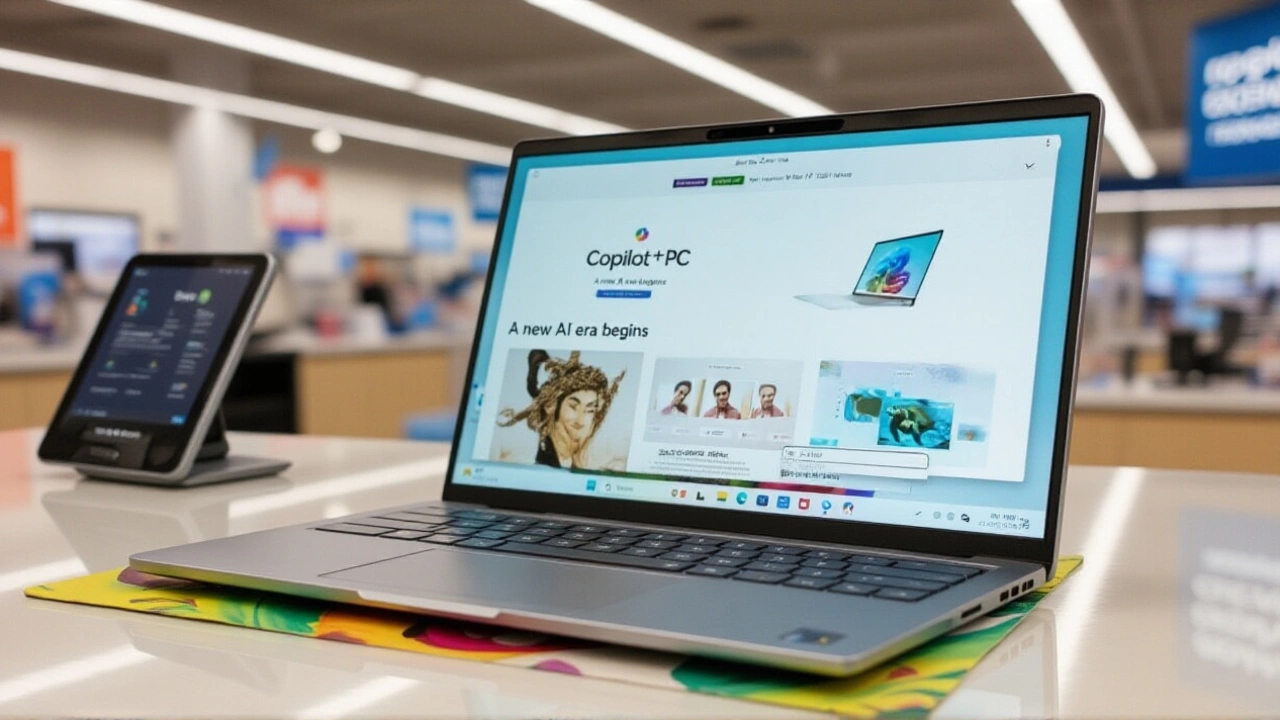For millions of Windows 11 users, the once-subtle AI assistant has become an inescapable presence—popping up in the taskbar, hijacking search results, and even rewriting their photos without asking. As of June 16, 2025, Microsoft has tightened its grip on Copilot in the latest Windows 11 24H2 and 25H2 builds, rendering old removal tricks useless. What was once a simple right-click and uninstall is now a battle against system-level hooks, hidden services, and policies that ignore user preferences. The twist? Microsoft itself accidentally removed Copilot for some users in March 2025—and then told them to reinstall it.
Why You Can’t Just Uninstall Copilot Anymore
Back in 2023, removing Copilot from Windows 11 was a three-step process: open Settings, find the app, hit Uninstall. Simple. Effective. Now? It’s a minefield. According to Tin, an independent Windows advisor who responded to a Microsoft Answers forum thread on June 16, 2025, registry tweaks and group policy edits are "less and less sufficient" in the latest builds. Even the long-relied-onTurnOffWindowsCopilot registry key—once a lifeline for Home and Pro users—is now ignored unless you’re on Enterprise or Education editions. That’s right: your personal laptop, your family PC, your $800 budget machine—they’re all subject to Microsoft’s AI agenda, with no real escape hatch.
The Enterprise Loophole (And Why Most Users Don’t Have It)
Here’s the reality check: only Microsoft 365 enterprise customers and IT admins can truly remove Copilot. Microsoft’s official documentation on learn.microsoft.com lays out the steps: open PowerShell, runGet-AppxPackage -Name "Microsoft.Copilot", then Remove-AppxPackage. But here’s the catch—this requires admin rights, domain policies, and a business subscription. For the rest of us? We’re stuck with nudges, pop-ups, and AI-driven search results we never asked for. Proton.me put it bluntly: "Only Microsoft 365 enterprise users... can fully remove Copilot." Everyone else? They get "limited visibility"—a polite way of saying "you’ll see it, you can’t hide it, and you can’t stop it."

The GitHub Savior: zoicware’s RemoveWindowsAI Script
Enter zoicware, a software developer who saw the writing on the wall and built a digital scalpel. On GitHub, their repository RemoveWindowsAI offers a PowerShell script that doesn’t just uninstall Copilot—it rips out the entire AI ecosystem: Recall, Input Insights, Copilot in Edge, even the AI Fabric Service that powers background image generation in Paint. The script isn’t magic, but it’s the closest thing to a reset button for non-enterprise users. Run it with-Options DisableRegKeys,RemoveNudgesKeys,RemoveAppxPackages and you’re looking at a cleaner, quieter Windows. Need to undo it? Just run -revertMode -AllOptions. The script even includes backup mode, preserving your system state before the purge. Thousands have used it since its May 2025 release. It’s not endorsed by Microsoft. But it’s the only thing that works.
Microsoft’s Own Ad Backfired—And That’s Significant
The deeper story here isn’t just about removal—it’s about trust. On November 19, 2025, Microsoft quietly pulled a promotional video for Copilot after users on Community Notes pointed out a glaring error: the AI-generated demo showed a file being saved to a folder that didn’t exist in Windows 11. A grandma could spot the mistake. A tech journalist called it "embarrassing." The ad vanished within hours. This wasn’t a glitch—it was a signal. Microsoft’s AI isn’t just intrusive; it’s becoming unreliable. And users are noticing. YouTube creator D67w7HCsjDE confirmed in a June 2025 video that, in some 25H2 builds, Copilot and Microsoft 365 Copilot can now be uninstalled through Settings—hinting that Microsoft might be quietly walking back its stance, even as it deepens integration elsewhere.
What’s Next? The Agentic OS and the End of User Control
Insiders predict Windows will soon become an "agentic operating system"—one that doesn’t just respond to commands, but anticipates them, acts on its own, and rewrites your experience without asking. That’s the direction Microsoft is heading. The AI Fabric Service, Recall’s memory capture, Copilot’s real-time suggestions—they’re all pieces of a larger puzzle. And once these systems are woven into the kernel, removal won’t just be difficult. It’ll be dangerous. You could break file indexing. You could crash the search function. You could destabilize the entire OS. Microsoft knows this. That’s why they’re making it harder. The question isn’t whether you can remove Copilot anymore. It’s whether you should want to—and whether the cost of doing so is worth losing stability for the sake of control.FAQ
Can I still uninstall Copilot from Windows 11 Home?
Technically, yes—but only partially. The built-in uninstall option may disappear in 25H2. Registry edits no longer work reliably. Your best bet is zoicware’s PowerShell script, which removes Copilot and related AI components. However, Microsoft may auto-reinstall them during updates. There’s no permanent solution for Home users without third-party tools.
Why did Microsoft accidentally remove Copilot in March 2025?
A bug in the March 2025 Patch Tuesday update (KB5052093) caused Copilot to be uninstalled for some users, likely due to a misconfigured package dependency. Microsoft quickly advised affected users to reinstall it via the Microsoft Store, signaling their commitment to keeping AI embedded—even when their own systems break it.
Is zoicware’s RemoveWindowsAI script safe to use?
Yes, if used correctly. The script is open-source, widely reviewed, and includes a revert function. It doesn’t modify system files outside AI components. Still, users should create a system restore point before running it. Over 42,000 downloads on GitHub and no confirmed cases of OS corruption suggest it’s reliable for experienced users.
Will Microsoft bring back Copilot after I remove it?
Almost certainly. Windows Update has been quietly reinstating Copilot packages since April 2025, even after manual removal. Enterprise admins can block this via Group Policy, but regular users are at the mercy of Microsoft’s backend rollout. The script from zoicware must be rerun after major updates to maintain removal.
What’s the difference between Copilot and Microsoft 365 Copilot?
Copilot is the Windows 11 AI assistant that runs locally and integrates with File Explorer, Search, and Edge. Microsoft 365 Copilot is the cloud-based version tied to Office apps like Word and Excel, requiring a paid subscription. Both can be removed separately, but the zoicware script targets both. The 25H2 update now lists them as distinct apps in Settings, making partial removal possible.
Why does Microsoft keep pushing Copilot despite user backlash?
Microsoft’s revenue model is shifting from software licenses to AI-driven subscriptions. Copilot isn’t just a feature—it’s a gateway to Microsoft 365 sales. Even if users hate it, keeping it visible increases adoption. With over 1.3 billion Windows 11 devices, even a 2% conversion rate equals $2.3 billion in annual revenue. That’s why they’re burying it deeper—not removing it.

Write a comment